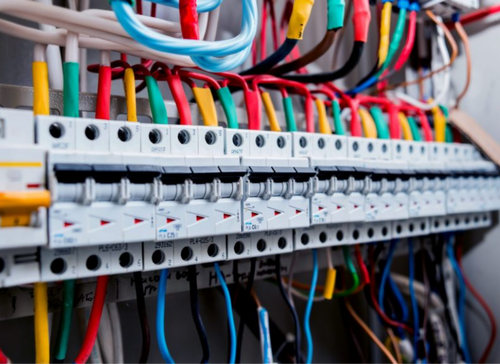Advanced BRE Automation Australia: Changing Your Automation Needs
Demystifying Electrical Installation: Understanding Codes and Regulations for a Legal and Safe Setup
In the realm of electrical setup, adherence to codes and policies is vital to make sure both validity and safety and security. The intricacies bordering electric work can be complicated, yet acquainting oneself with the established standards is key to navigating this area with self-confidence. By comprehending the complexities of the National Electric Code and regional building ordinance, individuals can assure that their setups satisfy needed security steps and remain in conformity with the law. Nevertheless, the journey to debunking electrical installation goes past simple familiarity with policies; it demands an extensive understanding of just how to implement risk-free electric techniques properly.
Significance of Electric Codes
The adherence to electric codes is vital in ensuring the security and integrity of electrical setups. Electric codes act as a set of standards and guidelines that determine the correct design, installation, and maintenance of electric systems. These codes are developed to minimize the risk of electrical dangers, fires, and various other safety worries that may emerge from damaged electric job.

Moreover, electrical codes are routinely upgraded to integrate new modern technologies, finest practices, and precaution. Staying upgraded with these codes is important for specialists in the electrical sector to make sure that their work satisfies the most recent safety and security requirements. Ultimately, the value of electrical codes hinges on developing a secure and reliable electrical facilities that benefits both individuals and areas.
Key Laws for Security
Numerous fundamental guidelines govern the security criteria in electrical setups. One vital policy is the National Electric Code (NEC), which provides guidelines for risk-free electric design, setup, and inspection to safeguard individuals and residential or commercial property from electric threats. The NEC covers aspects such as electrical wiring techniques, grounding, overcurrent defense, and equipment installation to make sure a safe electric system.
Another important guideline is the Occupational Safety And Security and Health Administration (OSHA) criteria, which focus on the safety and security of workers associated with electric installations (BRE Services). OSHA laws consist of needs for proper training, security treatments, and individual protective equipment to stop work environment mishaps and injuries
In Addition, the International Electrotechnical Payment (IEC) criteria intend to integrate electrical setup guidelines on a global range. These requirements address issues like electrical equipment safety and security, electromagnetic compatibility, and power efficiency to advertise harmony and security in electrical setups worldwide.
Conformity with these crucial guidelines is necessary to guarantee the safety and legality of electrical installments, protecting both people and residential property from the risks related to electrical energy.
Recognizing National Electric Code
Secret regulations such as the National Electrical Code (NEC) give vital guidelines for secure electric design, installation, and evaluation to ensure the defense of individuals and residential property from electrical risks. The NEC, likewise recognized as NFPA 70, is an extensive set of criteria for electric installments that are updated every 3 years. It is created by the National Fire Security Association (NFPA) and is extensively adopted throughout the USA.
The NEC covers different facets of electrical job, including wiring techniques, grounding, overcurrent security, and devices installation. It intends to protect individuals and property by dealing with potential threats connected with electrical systems. Conformity with the NEC is generally enforced by local her comment is here authorities having territory (AHJs), such as constructing code officials and inspectors.
Recognizing the NEC is important for electrical service providers, developers, and examiners to guarantee that installations fulfill the necessary safety and security needs. By adhering to the NEC guidelines, professionals can help stop electrical crashes and make certain the reliability of electric systems in residential, business, and industrial setups.

Compliance With Neighborhood Building Ordinance
Recognizing and sticking to local structure codes is important for guaranteeing the safety and security and conformity of electrical installments within a particular territory (BRE Services). Neighborhood building regulations differ from one district to an additional, and they are implemented to safeguard the well-being of occupants and homes. These codes detail specific needs for electrical installments, such as the kind of wiring to be used, positioning of electrical outlets, grounding methods, and load capabilities. By abiding by local building ordinance, electricians can make sure that installations are done properly and fulfill the needed safety and security standards.
When it comes to electrical installations, failing to conform with regional building codes can result in significant repercussions. Non-compliant setups might position safety threats, boost the danger of electric fires, and lead to expensive fines or lawful problems.
Ensuring Safe Electric Practices
Practicing strict adherence to developed safety methods is crucial in the area of electrical installments to reduce potential dangers and guarantee the health of individuals and homes. Safety in electric job includes numerous elements, beginning with the appropriate training of personnel associated with installation, upkeep, and repair. It is important to follow supplier instructions diligently when dealing with electric components and devices. Before commencing any type of job, it is necessary to carry out an extensive threat assessment to determine possible hazards and execute safety nets. Using individual safety equipment (PPE) such as insulated gloves, shatterproof glass, and non-conductive shoes is non-negotiable to protect versus electric shocks and Learn More arc flashes. Regular devices examinations, screening, and maintenance schedules are important to identify and rectify faults before they intensify into security threats. Furthermore, adherence to proper lockout-tagout treatments during maintenance activities is important to stop accidental energization of circuits. By focusing on risk-free methods, electrical setups can function efficiently while reducing the possibility of accidents or damage.
Verdict
Finally, adherence to electrical codes and laws is critical for making sure Find Out More the safety and validity of electrical installments. Comprehending the National Electric Code and conformity with regional building ordinance are necessary for a safe arrangement. By complying with these standards and practicing risk-free electrical methods, individuals can stop potential threats and guarantee the correct functioning of their electric systems.